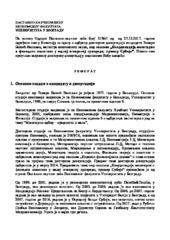Prikaz osnovnih podataka o disertaciji
Координација монетарне и фискалне политике у малој отвореној привреди, пример Србије
Monetary and fiscal policy coordination in a small open economy, example of Serbia
| dc.contributor.advisor | Fabris, Nikola | |
| dc.contributor.other | Božović, Miloš | |
| dc.contributor.other | Živković, Aleksandar | |
| dc.contributor.other | Vasiljević, Branko | |
| dc.creator | Bašić-Vasiljev, Tamara | |
| dc.date.accessioned | 2021-04-05T12:08:02Z | |
| dc.date.available | 2021-04-05T12:08:02Z | |
| dc.date.issued | 2018-07-10 | |
| dc.identifier.uri | http://eteze.bg.ac.rs/application/showtheses?thesesId=8015 | |
| dc.identifier.uri | https://fedorabg.bg.ac.rs/fedora/get/o:23418/bdef:Content/download | |
| dc.identifier.uri | http://vbs.rs/scripts/cobiss?command=DISPLAY&base=70036&RID=50777103 | |
| dc.identifier.uri | https://nardus.mpn.gov.rs/handle/123456789/18173 | |
| dc.description.abstract | У овом раду развили смо ново-кејнзијански динамички стохастички модел опште равнотеже помоћу кога одговарамо на питање оптималне комбинације монетарне и фискалне политике, за малу отворену привреду са високим степеном доларизације. Разматрали смо фиксирање девизног курса и циљање инфлације као облике вођења монетарне политике с једне стране, те дискрециону фискалну политику, циклично неутралну фискалну политику и фискална правила, као модалитете фискалне политике са друге стране. Модел смо калибрирали а затим симулирали реакције променљивих на шокове, и то технолошки и фискални шок, како бисмо квантификовали реакције система на шокове у различитим спецификацијама монетарне и фискалне политике. Ако као циљеве економске политике дефинишемо ценовну стабилност и привредни раст, симулације калибрираног модела стране имплицирају да је циљање инфлације у комбинацији са фискалним правилима оптимална комбинација монетарне и фискалне политике, када говоримо о реакцијама привреде на технолошки и фискални шок. Модел смо и оценили Bayes-овим техникама на подацима за Србију, како бисмо се уверили у реалистичност калибрираних вредности параметара и погодност модела да опише српску привреду. Оценом модела стекли смо увид и у стварну природу монетарне и фискалне политике у Србији, где се показало да кретање променљивих српске привреде најбоље описује модел који карактерише режим циљања инфлације и фискалну политику руковођену правилима, што и јесте de jure спецификација српске монетарне и фискалне политике. Овакав резултат унеколико и изненађује будући да је модел оцењен на подацима из посткризног периода, у коме је јавни дуг континуирано премашивао правилом дефинисани максимум. Фискални дефицит је ипак у довољној мери пратио поставке правила па привредна кретања боље описује модел који укључује фискална правила него модел са дискреционом фискалном политиком. | sr |
| dc.description.abstract | In this paper we developed a new-Keynesian Dynamic Stochastic General Equilibrium model suitable for monetary and fiscal policy coordination analysis in a small open economy characterized by a high degree of dollarization. We calibrated the model and then simulated the reactions of the variables to the technological and fiscal shock, in order to quantify the system’s reactions in different monetary and fiscal policy specifications. We considered exchange rate fixing and inflation targeting as monetary policy regimes on one hand, and discretionary fiscal policy, cyclically neutral fiscal policy and fiscal rules, as fiscal policy modalities on the other hand. Simulations of the calibrated model suggest that the optimal policy mix for Serbia, considering model’s reactions to a technological and fiscal shock, is a combination of inflation targeting and fiscal rules, if we define price stability and output growth as economic policy goals. We also estimated the model using Bayesian techniques and data for Serbia, in order to ascertain whether calibrated parameters are realistic and weather the model properly describes the Serbian economy. Estimated model provides insight into the real nature of monetary and fiscal policy in Serbia, where it is shown that Serbian data are best described by the model incorporating inflation targeting policy and fiscal rules, which are de jure adopted economic policies in Serbia. This result is somewhat surprising given that the model is estimated on a post-crisis period data, in which public debt level was overshooting the prescribed maximum. Fiscal deficit however was evolved in accordance with the rules to an extent sufficient enough to make the fiscal rules model better describe the data than the model incorporating discretionary fiscal policy or cyclically neutral fiscal policy. | en |
| dc.format | application/pdf | |
| dc.language | sr | |
| dc.publisher | Универзитет у Београду, Економски факултет | sr |
| dc.rights | openAccess | en |
| dc.source | Универзитет у Београду | sr |
| dc.title | Координација монетарне и фискалне политике у малој отвореној привреди, пример Србије | sr |
| dc.title.alternative | Monetary and fiscal policy coordination in a small open economy, example of Serbia | en |
| dc.type | PhD thesis | |
| dc.rights.license | ARR | |
| dcterms.abstract | Фабрис, Никола; Васиљевић, Бранко; Божовић, Милош; Живковић, Aлександар; Башић-Васиљев, Тамара; Koordinacija monetarne i fiskalne politike u maloj otvorenoj privredi, primer Srbije; | |
| dc.identifier.fulltext | https://nardus.mpn.gov.rs/bitstream/id/70560/IzvestajKomisije28538.pdf | |
| dc.identifier.fulltext | https://nardus.mpn.gov.rs/bitstream/id/70559/Disertacija.pdf | |
| dc.identifier.rcub | https://hdl.handle.net/21.15107/rcub_nardus_18173 |



